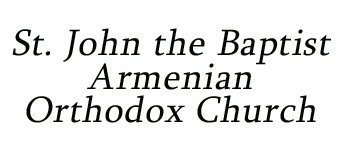Armenian Genocide Recognized in Greenfield
Sunday, May 1, 2011
By David Luhrssen
Milwaukee Armenians gathered at St. John the Baptist Armenian Church in suburban Greenfield for the parish’s annual Martyrs Day commemoration. Greenfield alderwoman Shirley Saryan presented a proclamation from the city’s mayor, Michael J. Neitzche, which acknowledged the longtime presence of Armenians in the community, called memory of the events of 1915 “crucial for preventing new genocides” anSaryanpresentingProclamationd proclaimed a day of remembrance in Greenfield.
The reading of the proclamation was part of a program held on Sunday, May 1, 2011, which also included a requiem in honor of the 1.5 million who fell during the Genocide, a traditional madagh dinner in the church’s cultural hall and the screening of a DVD filmed during the 2009 Genocide commemoration at Glendale Community College in California. The film’s keynote speaker, Rev. Fr. Vazken Movsesian, emphatically presented the prevention of genocide in our time as the message for Martyrs Day by placing the Armenian response to 1915 in the context of wider world campaigns for human rights. Movsesian is a well-known activist for the homeless and the needy in California and has taken the lead in involving Armenians in protests against genocide in Darfur.
It’s no coincidence, he reminded listeners, that Martyrs Day Commemoration as we know it began in 1965 alongside the rise of the American civil rights movement under Martin Luther King, Jr. But the resulting renewal of ethnic pride and call for public protests has had only limited effect in the U.S., where several years ago Secretary of State Condoleezza Rice blandly called for more historical study and President Barack Obama has not fulfilled his pledge to call the Genocide by its name.
“We need to look at ourselves as something bigger than a community consumed with Genocide,” Movesian said. “We need to show we are worthy to be called the people of the first genocide.” Movsesian recounted a 2006 visit to Rwanda, where his conversations with survivors of that country’s genocide where virtually identical with the memories of his grandparents. “Every story was an Armenian story—except the color of their skin was different.” He also noted that the Genocide Museum in Rwanda devoted two rooms to 1915 while the so-called Museum of Tolerance in West Hollywood, CA, constructed by a governor of Armenian descent ignores the Armenian Genocide.
A greater involvement by Armenians in contemporary campaigns against oppression could pay political dividends in the form of Genocide recognition, but Movsesian reminded listeners that the greater imperative comes from the gospel message of compassion for the least of our brethren. Only by being true to the deeper meaning of the Armenian Christian heritage will the Armenian cause of Genocide recognition move forward.


